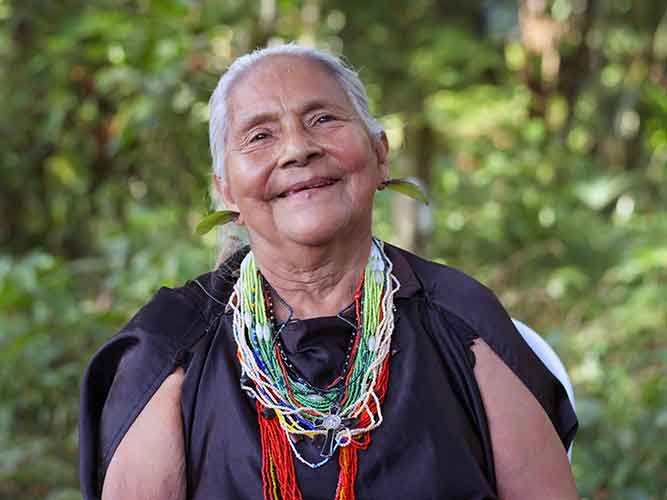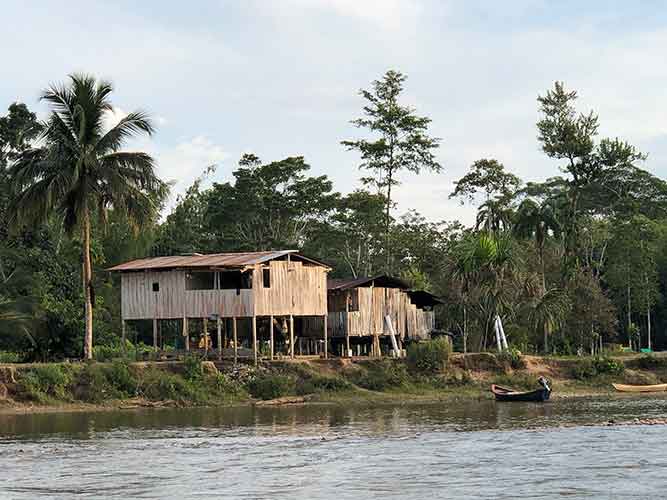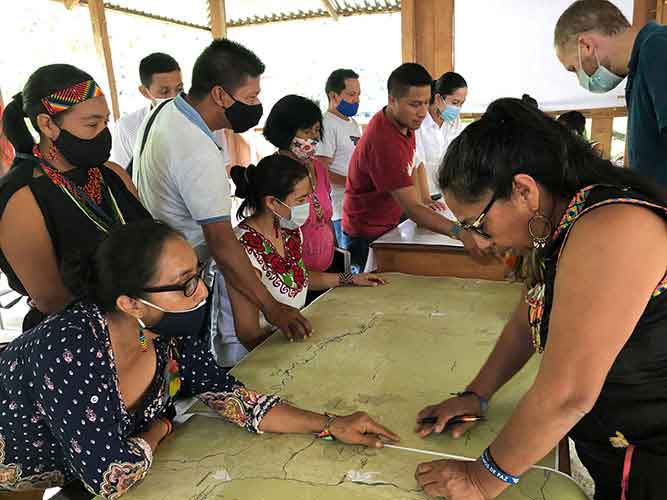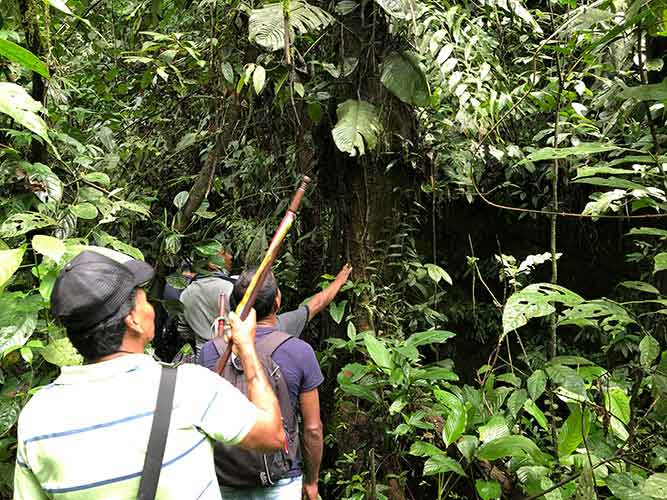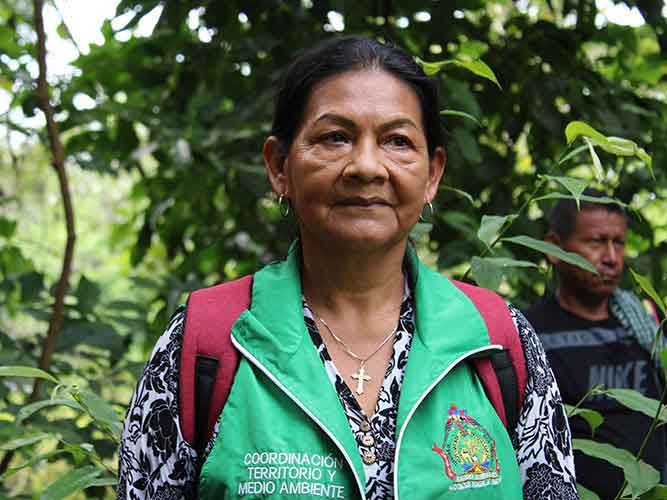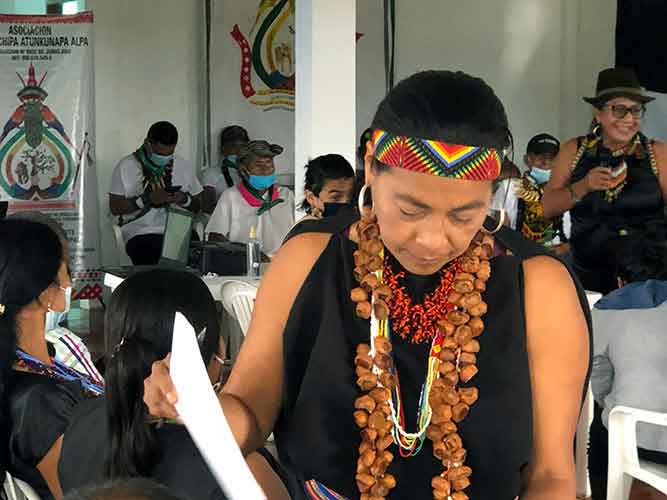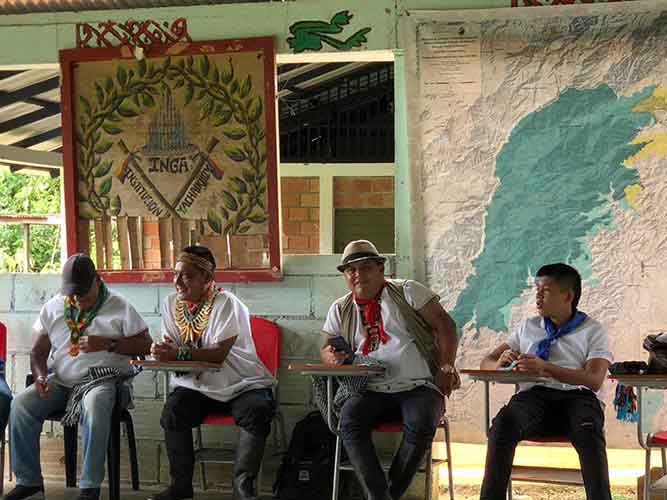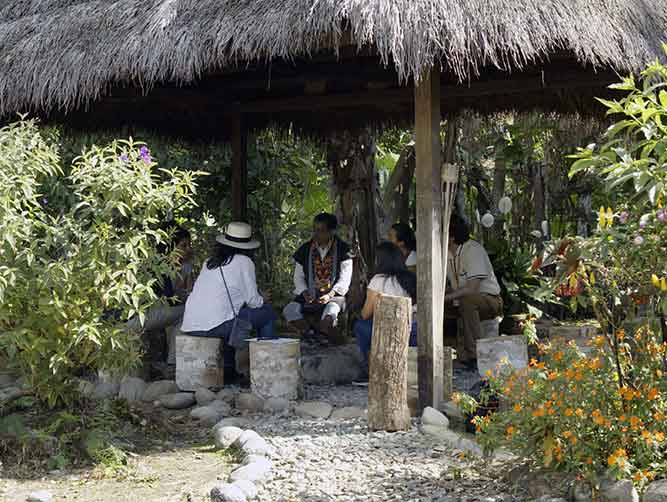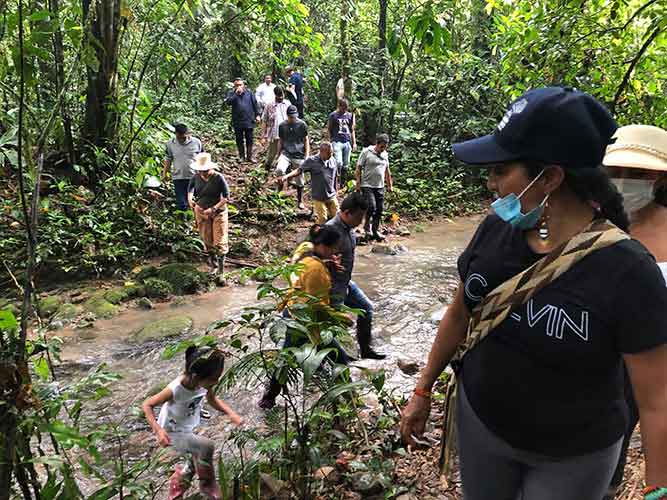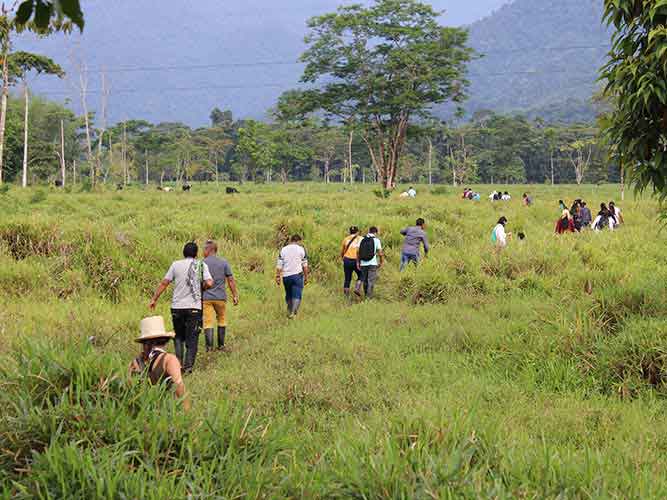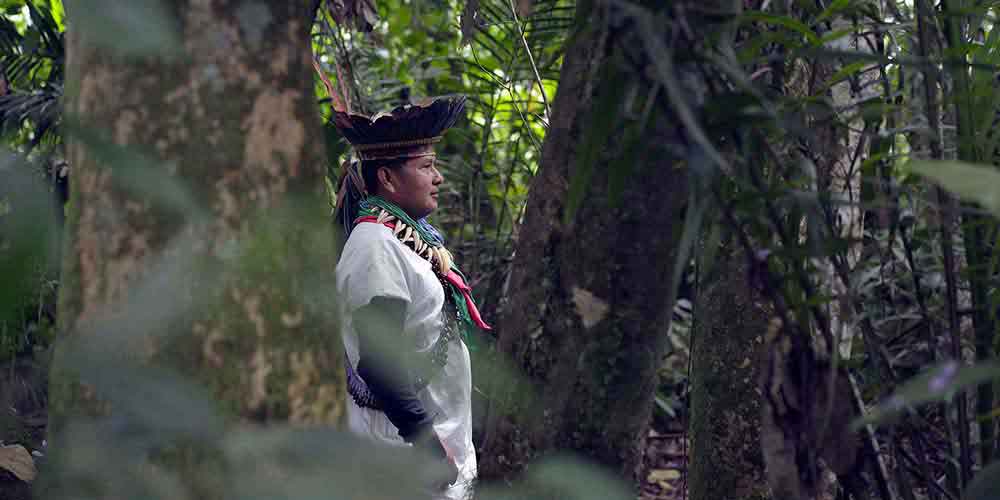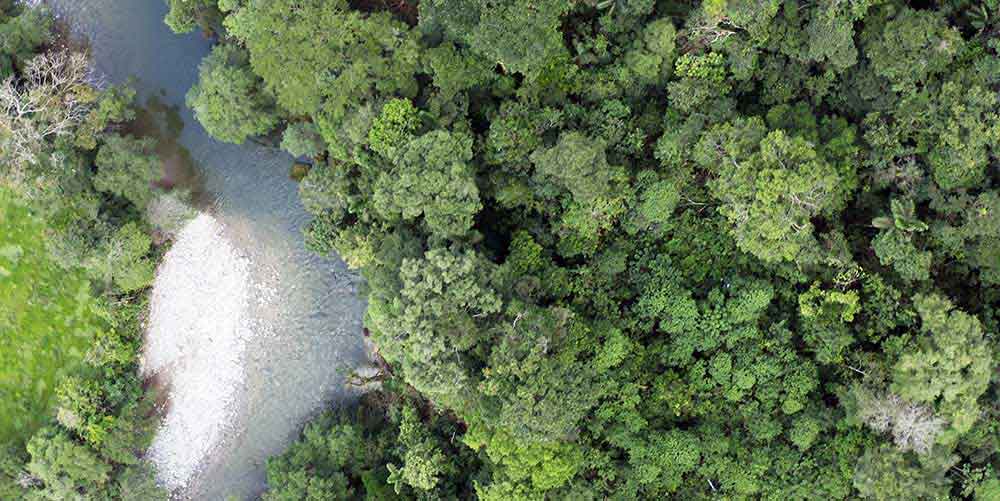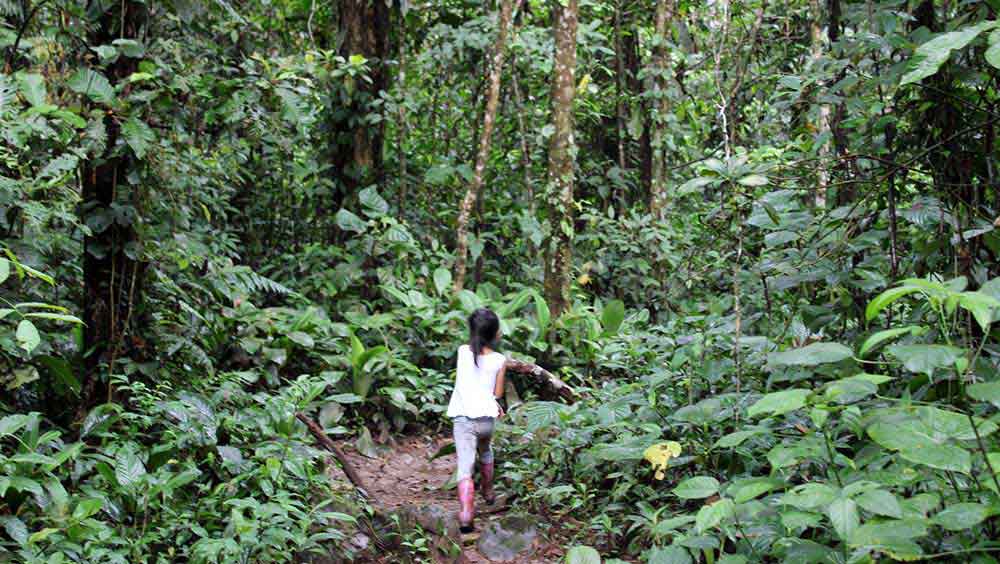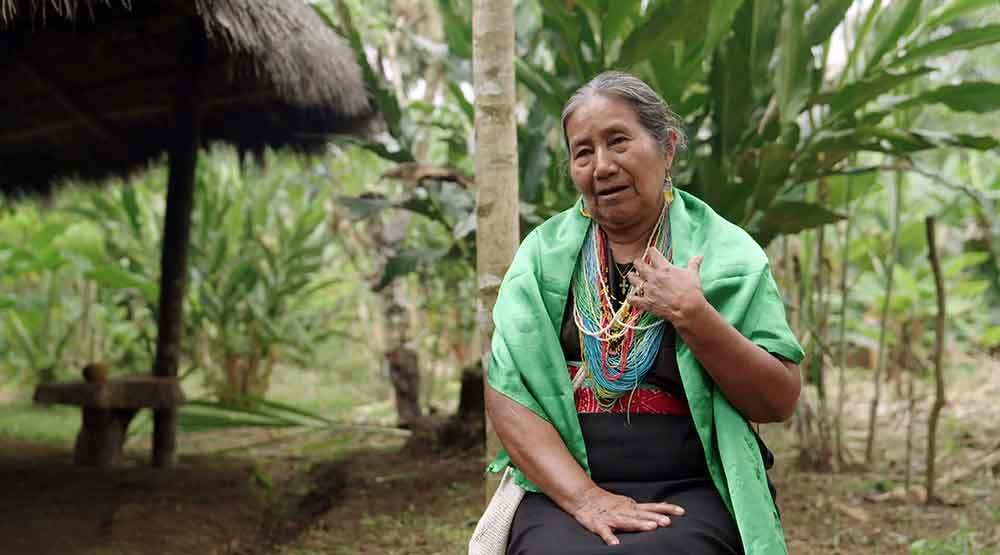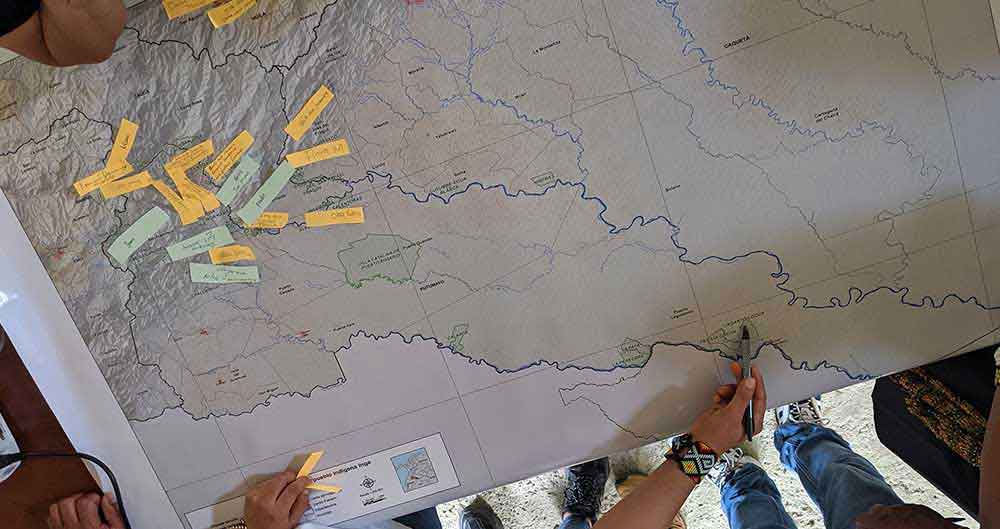DEVENIR UNIVERSIDAD IS A BIOCULTURAL PROJECT ENGAGING IN THE PROCESS OF AN AMAZONIAN TERRITORY BECOMING UNIVERSITY. THE PLATFORM DOCUMENTS AND CONTRIBUTES TO THE ACTIVITIES OF AN INDIGENOUS COMMUNITY IN COLOMBIA’S ANDEAN AMAZON, COLLECTIVELY WEAVING A NEW UNIVERSITY. AS A GROWING BIOCULTURAL ORGANISM, THE PROJECT INVOLVES HUMAN AND NONHUMAN MINDS IN BRIDGING DIFFERENT KNOWLEDGE SYSTEMS. AT THE HEART OF THE RESEARCH LIES THE LIVING COGNITIVE TERRITORY AND THE WAYS IN WHICH THIS KNOWLEDGE CAN BE PROTECTED AND TRANSMITTED. THE UNIVERSITY EXPANDS ACROSS THE TERRITORY IN A DECENTRALIZED CONFIGURATION OF LEARNING SITES AND PATHS. NEW PEDAGOGIES ARE DESIGNED TO GENERATE PLACE-BASED KNOWLEDGE AND DRIVE THE PARADIGM SHIFT FROM AN EXTRACTIVE TO A GENERATIVE AND IMAGINATIVE RELATIONSHIP WITH THE TERRITORY. IN INTERCULTURAL TEAMS, WE GENERATE ART & AUDIOVISUAL MEDIA, TERRITORY & ARCHITECTURE, AND STAGE PUBLIC EVENTS AND EXHIBITIONS TO SUPPORT THIS GOAL.













